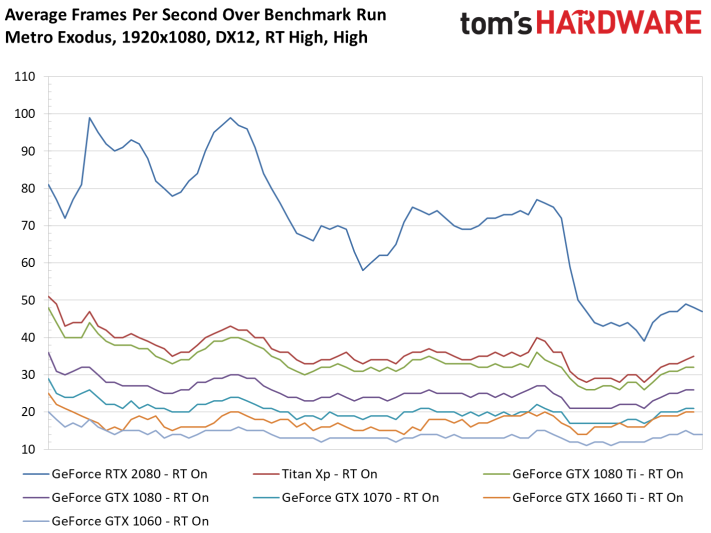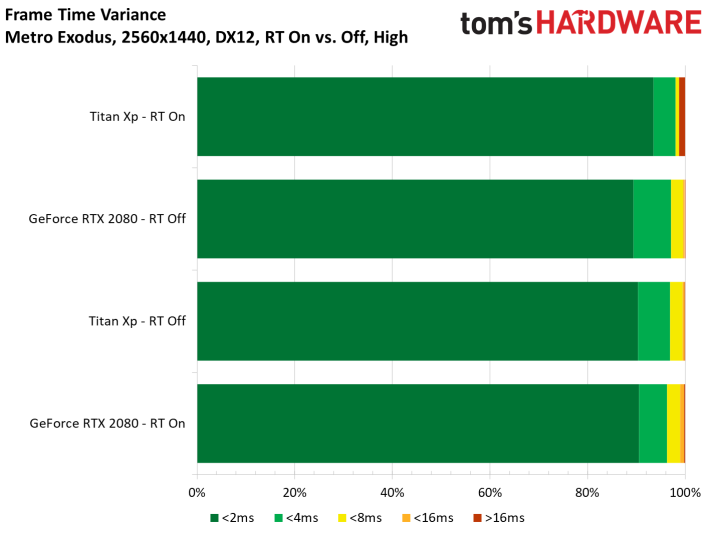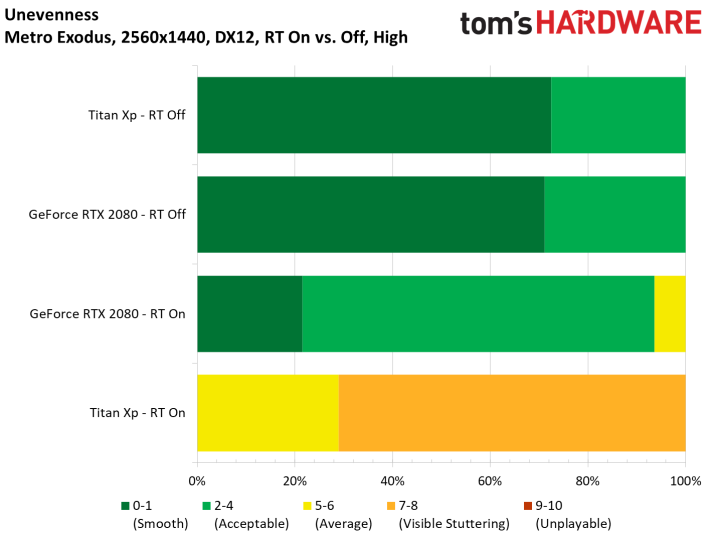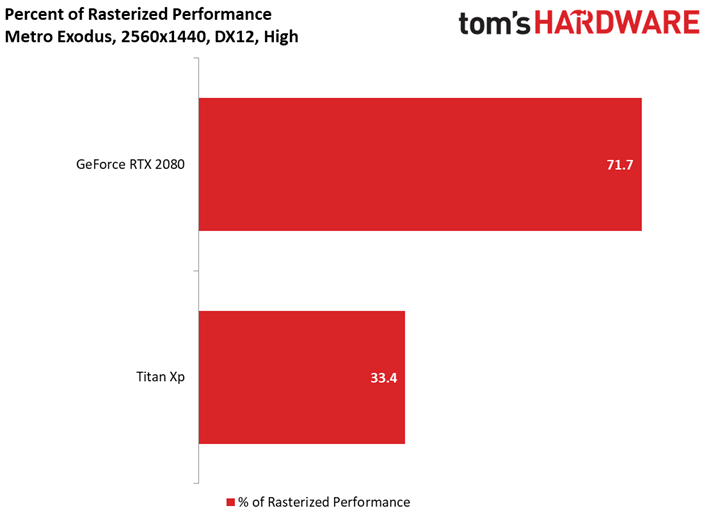Ray Tracing On Nvidia’s Pascal Architecture, Benchmarked
Metro Exodus: Ray-Traced Global Illumination
Metro Exodus: Ray-Traced Global Illumination
Once more, Nvidia sets the stage. References to performance are based on the company’s own measurements, not ours.
“Metro Exodus uses ray-traced global illumination to render dynamic scenes with more realistic indirect and diffuse lighting that updates in real-time as lighting changes, and as events occur in the game world. In other words, the light bounces naturally, illuminating and brightening surrounding detail. And if the sun moves or window shades open, the room’s lighting realistically changes, presenting the room in an entirely new light (literally), compared to non-ray-traced methods. Global illumination simulates both direct and indirect illumination in a scene. In Metro, the GI process requires rays be cast per pixel, making ray-traced global illumination more performance-intensive than limited ray-traced reflections, where rays can be cast more selectively. In this case, RT cores provide a big boost, with RTX 2080 performing up to 3x faster than GTX 1080 Ti. The light that hits a nearby object will reflect and scatter off that nearby object and will color the surrounding area. The ball on the right-side of the above diagram could be a colored ball, and that effectively would influence the color of surfaces around it. So, in the above-diagrammed GI case, the eye is looking into the bottom corner, and rays are being cast in random directions. The global illumination algorithm literally casts rays in random directions from a surface point and collects light information from multiple objects intersected by the random rays. The process is not exactly the same as calculating reflection rays based on the incident angle. Instead, rays are cast in random directions and the returned light information is added to color the local pixel. Then you add that with all the other shading going on and what you get is a bunch of cool direct and indirect lighting effects that are making things very dynamic as the camera moves around the scene."
As Nvidia’s prelude suggests, ray-traced global illumination (GI) is an especially expensive operation. As such, we ran our benchmarks using the High quality preset (down two levels from Metro’s most demanding setting) and the High Ray Trace setting (down one level from the top).







With ray tracing disabled, the fastest Pascal-based cards land right behind Nvidia’s GeForce RTX 2080, and everything down to a GeForce GTX 1070/1660 Ti delivers fairly playable performance.







Adding ray-traced GI to the workload does affect GeForce RTX 2080, but it downright brutalizes the Pascal line-up. From Titan Xp down, none of the cards we tested are fast enough to consider toying with ray tracing in Metro Exodus anything beyond a cursory peek.
Given the progression from Battlefield V to Shadow of the Tomb Raider to Metro Exodus, increasingly demanding ray-tracing workloads allow GeForce RTX 2080 to retain more of its baseline performance. Here, the Turing-based card only takes a 24% hit, whereas Titan Xp suffers a 60% slow-down.
It’s also interesting that the card most adversely affected by ray-traced GI is GeForce GTX 1660 Ti. In absolute terms, the 1660 Ti still lands just behind GeForce GTX 1070. But the Turing architecture’s enhancements just aren’t as prominent in our benchmark.
Get Tom's Hardware's best news and in-depth reviews, straight to your inbox.







Similar performance from the RTX 2080 and Titan Xp with DXR disabled at 2560x1440 gives way to a greater-than 2x disparity with ray tracing turned on. One card’s fairly playable, while the other is not.
In case the previous bar graph didn’t hit hard enough, here’s evidence that Titan Xp loses two-thirds of its baseline frame rate with the Ray Trace option set to High.
MORE: Best Graphics Cards
Current page: Metro Exodus: Ray-Traced Global Illumination
Prev Page Shadow of the Tomb Raider: Ray-Traced Shadows Next Page Conclusion-
Jsimenhoff This is a great article Chris. Looks like Ray Tracing is a bit to much to process for my Nvidia 1080 GTX!Reply -
Druidsmark ReplyAnimeMania said:Does this only pertain to Windows 10 or will this also work on Windows 7.
Raytracing as a far as I understand it requires DirectX 12 which requires Windows 10. As far as I know only Blizzard's game World of Warcraft supports DirectX 12 on Windows 7. -
cryoburner It will be interesting to see how well AMD's existing cards handle DXR Raytracing. It seems like their better compute performance could potentially give them an advantage over similarly-positioned Pascal cards. That still might not be enough for playable performance though.Reply -
DotNetMaster777 Chris very nice article and very good performance graph for frames per second!Reply -
bit_user Reply
Excellent analysis. I really appreciate the amount of effort that must've gone into this!cangelini said:Ray Tracing On Nvidia’s Pascal Architecture, Benchmarked : Read more


